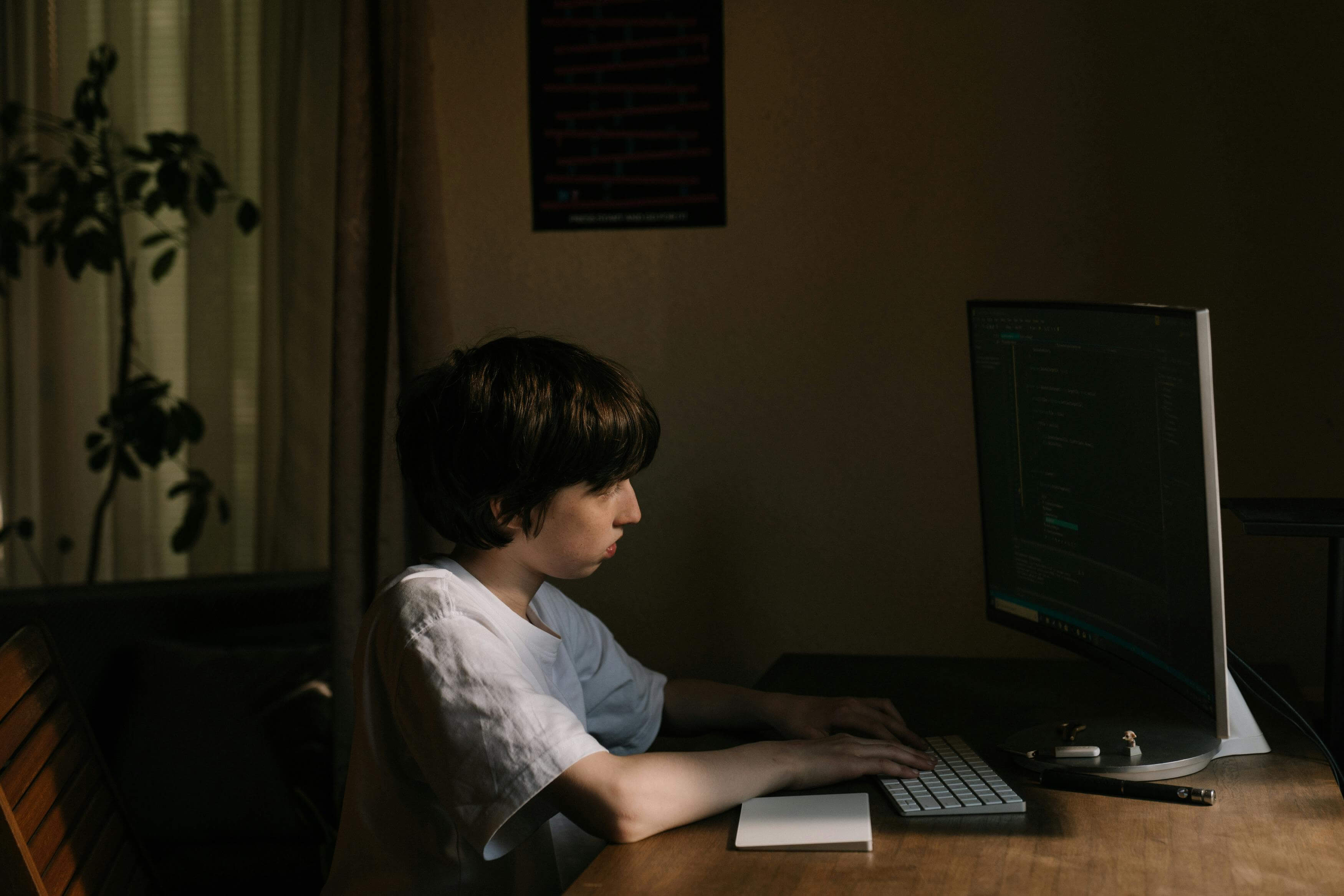What is Digital Kidnapping and Can it Happen to Your Child?

Over the past few decades, new forms of technology have opened up a variety of modern avenues for communication, including long-distance phone calls, instant messaging, and video calling. The medium of communication that has had arguably the biggest impact on our culture, however, is social media. From Instagram to Facebook to TikTok to Twitter, the list of social networking platforms goes on and on. For better or for worse, social media has become a part of our everyday lives, leaving us no choice but to adapt to the new challenges and dangers it presents.
Although social media has been around since the early 2000s, this form of communication is still in its infancy, meaning we don’t yet know what the long-term implications of using this technology will be. In 2017, approximately 37% of the world’s population — about 2.8 billion people — used social media of some sort (ParentMap, 2017). In 2023, the number of people using social media is likely to be more than it was seven years ago.
Considering the enormous reach of these platforms, it’s important to evaluate the potential risks that come with putting our information on the internet for other people to find. When we share our personal photos, videos, opinions, and thoughts on social media, there’s no way to know who is viewing them or what other social media users might be doing with this information.
Inevitably, the evolution of technology is followed by the evolution of human behavior. The digital age we’re living in has allowed people to find, monitor, and steal information in ways that weren’t possible before, presenting a danger to social media users who may not know about these risks. Children and teenagers are especially vulnerable to these threats, as they are often unfamiliar with the warning signs to look out for. One new danger facing children and young social media users that parents should be aware of is called digital kidnapping.
What is digital kidnapping?
Digital kidnapping is a form of identity theft that occurs when a stranger steals a photo of a minor from the internet but posts the photo to their own account as if it is theirs (ParentMap, 2017). These digital kidnappers can range from teenagers who want to roleplay as a parent by posting stolen photos of young children, to cyber criminals who might use these photos to prey on children by creating fake accounts to get close to them, which can lead to real-life child abduction (Hammond, 2015; ParentMap, 2017).
Len Edwards, the Director of the Commission of Missing and Exploited Children, warns that these photos can even be altered to create child pornography: “They can take those pictures and they can take them and manipulate them, and shadow them and put clothes on them and take clothes off of them,” (Hammond, 2015).
Many parents who post pictures of their children online don’t realize the danger this seemingly harmless act presents. Take Lindsey Paris, for example. As parents frequently do, Lindsey shared photos of her young son on her Facebook account and blog. However, while she was perusing social media one day, she realized that one of her new Facebook followers had been stealing her son’s photos, posting them to her own page, and acting as if the photos were of her own child. When Lindsey messaged the girl to ask her to take the photos of her son down, she discovered that the girl was only 16 years old and hadn’t stolen the photos with any ill intent. The girl was apparently using the photos to roleplay as a parent, and she heeded Lindsey’s request to take the photos down (Hammond, 2015).
While Lindsey’s experience with digital kidnapping was a mild one that ended without any significant harm to her or her family, she is only one of many victims. With small pieces of information gleaned from a photo of your child on their first day of school or their birthday, predators can accumulate knowledge about you and your family. Thus, those once-harmless photos can turn into a harmful database of information that strangers can use to prey on your children.
How to keep your children and family safe online
Lindsey Paris used her experience with digital kidnapping to reform how she shares information online: “I don’t overshare. I don’t use my son’s real name. I watermark a lot of my photos, and I’m just really careful about what appears in the photos and all that sort of stuff,” (Hammond, 2015). These are just a few of the precautions you can take to protect your children when posting online. Let’s take a look at some other safety tips that can help prevent your family from becoming the victim of digital kidnapping.
-
Be mindful of what you post online
Research has shown that people share personal memories online for a few main reasons: to communicate details about themselves, to maintain relationships with family members and friends, and to pass along information (Stone et al., 2022). Social media therefore enables us to develop a sense of personal identity, preserve vital social bonds, and access important knowledge. Because of its many advantages, it’s unlikely that social media users will ever stop using these platforms altogether. Even so, there should be limits to how much and what kinds of information you share online.
It’s important to remember that once you post something online, it’s never really gone, even if you delete it. Thus, you should think twice before posting something that you might regret later on, especially when it comes to posting about your children. You should not only consider what kinds of information could be dangerous to post about, but also what kinds of information your child might not want to be shared about themself as they grow older.
-
Don’t include location information in your photos and avoid geo-tagging when you post
Every time you take a photo with your smartphone you could unintentionally be creating location data that reveals the exact spot in which these photos were taken, including your home address or your child’s school. This is because data called EXIF, which includes precise GPS coordinates, is created whenever you take a photo on a digital camera or smartphone (ParentMap, 2017). To prevent this location information from endangering your family, you should delete all of the EXIF data from your smartphone. Luckily, many social media platforms strip this data from your photos before posting, but it’s always safer to get rid of it manually (Hesse, 2020).
Additionally, while many people use the geo-tagging feature on social media platforms such as Instagram to reveal the location of their aesthetic vacation photoshoot or the concert venue they saw their favorite artist at, this information can be used to stalk you or your family. Likewise, while many people like to post Instagram stories about what they’re doing at a particular moment, such as having dinner with friends or exercising at the gym, these posts can be used to find out information about your current location, which also presents a risk of predators being able to stalk you. To ensure your family’s safety, never use geo-tagging features, and never post pictures of you or your children in an identifiable location while you’re still there.
-
Limit access to your account whenever possible
Most social media sites have privacy settings that allow you to limit access to who can view your account and posts. Facebook and Instagram, for example, both allow users to make their accounts private so that other users who aren’t in their network of approved friends can’t view their photos and videos (Hammond, 2015; ParentMap, 2017). Only grant permission to follow you to people you know and trust in real life, and make sure that your child is doing the same if they have their own social media profiles. This will make it much more difficult for digital kidnappers to get their hands on your photos.
-
Use ImageShield to be aware of when photos of your children are being misused
If your photos are stolen by a digital kidnapper, chances are you might never know about it. Predators who steal these photos with malicious intent have ways of keeping their crimes discreet so that they don’t get caught, meaning they’re likely to get away with it if you don’t have a way to track who’s uploading your photos without your knowledge and consent. ImageShield is a service that helps people protect the photos they share online from being abused. By using a photo monitoring and protection service such as ImageShield, you can find out whether the photos you’ve shared on Facebook, Instagram, and elsewhere are being used in a way they shouldn’t be.
Get your free ImageShield report today on the security of the photos you’ve shared on Facebook and Instagram. Visit our blogs for more information on media literacy and how to protect yourself and your family from photo abuse.
Resources:
Bearak, S. (2017, November 16). Digital Kidnapping: What It Is and How to Keep Your Kids Safe on Social Media. ParentMap. Retrieved November 15, 2023, from https://www.parentmap.com/article/kidnappers-kids-photos-digital-kidnapping-social-media.
Hammond, A. (2015, April 28). Digital Kidnapping Striking Fear In Proud Parents. Commission on Missing & Exploited Children. Retrieved November 15, 2023, from https://www.comec.org/digital-kidnapping/.
Hesse, B. (2020, October 7). What Is EXIF Data, and How to Remove It From Your Photos. Lifehacker. Retrieved November 15, 2023, from https://lifehacker.com/what-is-exif-data-and-how-to-remove-it-from-your-photo-1845292669.
Stone, C. B., Guan, L., LaBarbera, G., Ceren, M., Garcia, B., Huie, K., Stump, C., & Wang, Q. (2022, February 22). Why do people share memories online? An examination of the motives and characteristics of social media users. ResearchGate. Retrieved November 15, 2023, from https://www.researchgate.net/profile/Qi-Wang 39/publication/358395774_Why_do_people_share_memories_online_An_examination_of_the_ motives_and_characteristics_of_social_media_users/links/61ffe3d7b44cbe4227286d3c/Why-do-people-share-memories-online-An-examination-of-the-motives-and-characteristics-of-social-media-users.pdf.
Photo by cottonbro studio from Pexels: https://www.pexels.com/photo/boy-in-white-t-shirt-using-laptop-computer-4709287/

